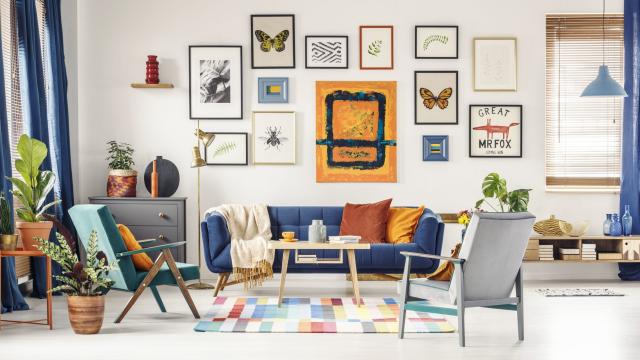For a long time, collecting was considered just another hobby. The question on the playground wasn’t if you collected something, it was what you collected. And it wasn’t limited to scratch-and-sniff stickers, unusual-looking rocks, and coins that grown-ups told you would be valuable one day — adults were in on it too. Whether it was making up for a deprived childhood with a doll collection, or that you once mentioned in conversation that you liked owls and henceforth everyone gave you items featuring owls, a lot of us have some sort of collection somewhere in our home.
If yours is safely boxed away in an attic, basement, or storage facility, that’s another story. But for people who prefer to have their collection of commemorative souvenir plates from Orlando or old-timely cigarette advertisements out in full view, there’s a fine line between a tasteful display of your items, and looking like a hoarder.* In a recent New York Times article, Tim McKeough wrote about that line, and how to stay on the side of it that doesn’t involve a TLC camera crew showing up at your front door.
*Hoarding disorder is an actual mental health condition, and no part of this article is meant to make light of that. It’s the term used in the New York Times piece this article references and draws upon, so we stuck with it for consistency.
Be deliberate about what you collect
According to McKeough, the difference between a hoarder and a collector typically lies in intention: “A hoarder will amass just about anything that seems remotely appealing, or might be needed in the future, while a collector tends to be choosier.” So instead of scrolling through eBay and picking through antique stores buying every single pair of vintage women’s cat-eye sunglasses you can find, only purchase the ones you actually want.
You don’t have to display everything at once
If you’ve decided to display a collection in your home, that doesn’t mean you have to put every piece of it out at the same time. Instead, consider McKeough’s advice:
First, define the types of objects you want to display. Then choose each example with purpose. If you’re going to display pottery, don’t just put out every bowl you can get your hands on. Try to be mindful of displaying a range of interesting examples, perhaps in a variety of sizes, textures or colours.
Being interesting has nothing to do with monetary value
Let’s say you’ve decided to follow in the footsteps of Bert from Sesame Street and now have a substantial paperclip collection. Though their size may make them a challenge to display, don’t let their (lack of) significant monetary value dictate whether they deserve a spot in your home. If you’ve found something that makes you happy every time you look at it, that’s a much better option that displaying delicate, costly antiques just because the Victorians thought it was the proper way to decorate a house and wanted to show off to their guests.
Group objects together by type
If you collect different types of items on one theme, group all the similar objects together when you display them. Using owls again, if you’ve accumulated owl figurines, framed art, and stuffed animals, put all the figurines together in one room instead of having multiple displays featuring figurines, art, and stuffed animals. “There’s power in numbers,” Rebecca Robertson, an interior designer told the New York Times. “When you get 25 things together, it really starts to hold the wall and draw attention.”
Of course, there are no hard-and-fast rules to showcasing your collection(s), so McKeough says that grouping items with similar characteristics together is another option (though one that takes some planning ahead). For example, you could display items from various collections together based on what they visually have in common, like a mix of similar colours, shapes, or materials.
Or, if you’re installing an HGTV-approved “gallery wall,” using frames of the same colour can tie it all together, regardless of what’s actually inside those frames. Speaking of which, another pro-tip from McKeough’s article is to arrange the items you plan to hang on a gallery wall on the floor first and take measurements to make sure it fits. That’ll save the time and hassle of having to fill in or cover up nail holes you don’t need. And don’t be afraid to display items from your collection inside a glass shadow box, like a museum. It’ll instantly turn a few items into art.

Leave a Reply
You must be logged in to post a comment.